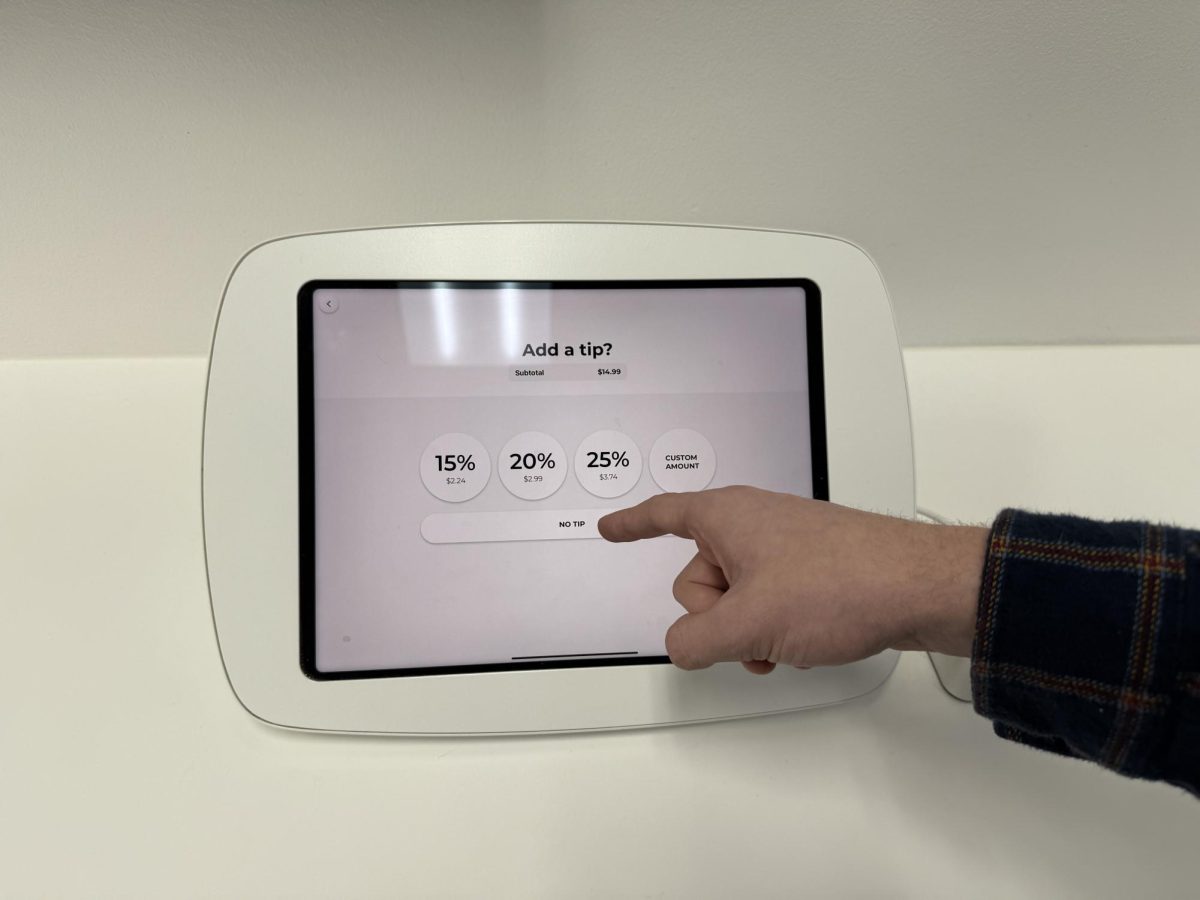Screen Fever: Smart-phones cause positive and negative symptoms
September 18, 2015
Call Me
Everyday Ryan Bush, senior, is on his phone. All day. Almost constantly. But this may be considered beneficial to everyday life.
Improves Communication
Contrary to belief, Bush said his smart-phone actually makes it easier to communicate with others. Thus, his smart-phone improves his overall social life.
“I mean I get to talk to my friends more often, and I get to keep in contact with them even when I am not with them,” he said.
Some may argue smart-phones allow people to become flaky, but Bush doesn’t see this effect at all.
“I feel like if I am going to say maybe, I would say maybe in person also whether or not I have a smart-phone,” he said.
According to Aaron Smith at the Pew Research Center, Bush is just one of the now two-thirds of Americans who are smart-phone owners.
These mobile devices act as a bridge-way to the online world for people, providing them with real time news coverage, simpler communication with others and in the average high-schoolers case, extra help in the school environment.
Helps Organization
Rather than restricting smart-phone usage in her classroom, Ashley Hobbs, AP psychology and sociology teacher, encourages her students to use their phone for in-class simulations, to put important test dates into their phone and to utilize the Google drive apps.
“I recommend to kids to get the app or understand how to use it so they can pull it up on their phone and access it at any point,” she said.
Even Hobbs admits to relying on her phone in daily life. Specifically, she finds her smart-phone extremely useful for communicating with students and remaining organized.
“My smart-phone syncs to my computer and my work schedule and everything is together, so I think that it is really good for organization,” Hobbs said.
Tools for Progress
Like Hobbs, Kristin Blake, senior, relies on her phone throughout her day.
Blake runs a travel blog through WordPress, making her smart-phone usage very unique. With her phone, she is able to monitor her blog specifically by observing what her viewers like to see.
“I makes it a lot easier to get things done and faster,” Blake said. “I can have my social and my school stuff all in the same spot and not jump around as much.”
Blake wants to go into the field of journalism, so she said it helps because a lot of print is adapting to online.
“I’m trying to look at technology as a way to enhance my writing abilities,” she said.
Blake said smart-phones are a pivotal part of everyday life and she has done her best to adapt to its effects.
“You really need to embrace it because that’s where the world is going,” she said. “If you don’t embrace it, you’re going to get run over by it”
(Maybe) Not
Everyday Sydney Drennen, junior, is on her phone. During passing periods. After school. Before bed. But this isn’t necessarily a good thing.
Harms Social Interaction
“It’s way harder for me to communicate with people in person,” Drennen said. “It’s hard for me to like make eye contact and have a serious conversation.”
She has been so used to having a screen in front of her at all times that when she is faced with an uncomfortable or unknown situation her first instinct is to pull out her phone. She is no longer comfortable with the face-to-face communication that was once relied on.
“I rarely think about what’s actually going on in the world like wars and stuff,” Drennen said. “When I’m on my phone, there’s really no useful information on there. It’s just random stuff that people do but I act like I care about it because I don’t want to talk to people.”
Drennen’s situation displays a larger issue: smart-phones are increasingly harmful to teens, especially when faced with social situations.
Expert Evidence
Dr. Lauren E. Sherman, Dr. Minas Michikyan and Dr. Patricia M. Greenfield designed a study to address this issue between friends by using different types of communication including in-person, video chat, audio chat and instant messaging (IM). According to the study, a lower level of bonding was experienced through text
communication. Because much of teenage communication is text based, there has been noticeable real world implications.
Much like the doctors involved in the study, Dr. Miles Patterson, Professor Emeritus at the University of Missouri- St. Louis, observes this trend as well. He said the use of mobile devices (MD’s) negatively affects social interaction.
“The short answer is that smart-phones are making us more antisocial when it comes to face-to-face interactions,” Dr. Patterson said. “When people are using MD’s in the presence of others, they pay less attention to those around them.”
He examines the fact that people can be chronically dependent on them which can result in a higher negative affect in daily life.
“This is also a problem in business meetings and in classrooms,” Dr. Patterson said. “That is, people are texting when there are discussions or activities to which they should attend.”
Dr. Patterson says that people can become less capable of reading the subtle nonverbal reactions of their social partners.
He said because of this exaggerated use of MD’s, people are uncomfortable in the presence of other people, and are less sensitive in reading nonverbal cues. This exaggerated use has also become something of an addiction – a potentially harmful addiction.
“When their [smart-phones] use intrudes on our usual face-to-face contacts, then there can be problems, especially in our interactions with others,” Dr. Patterson said.



















